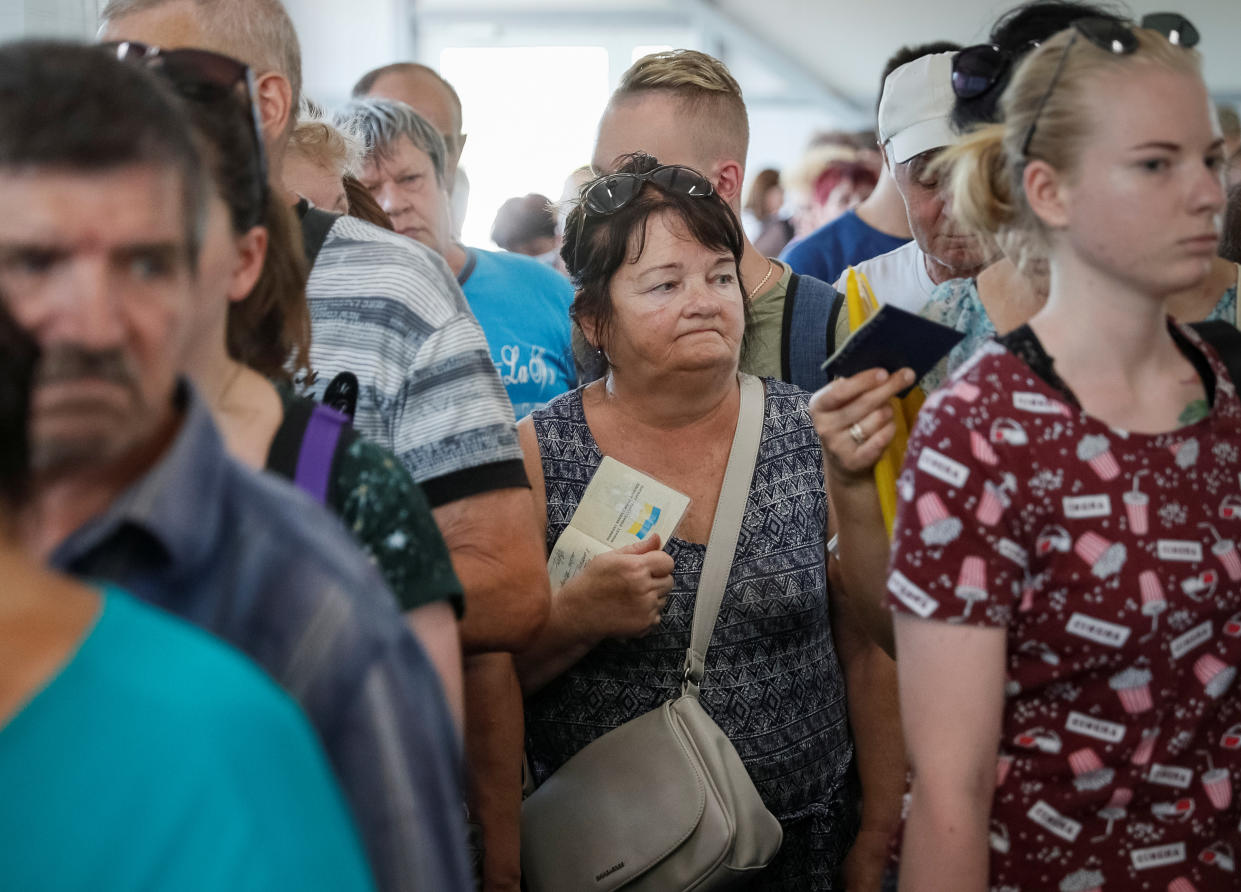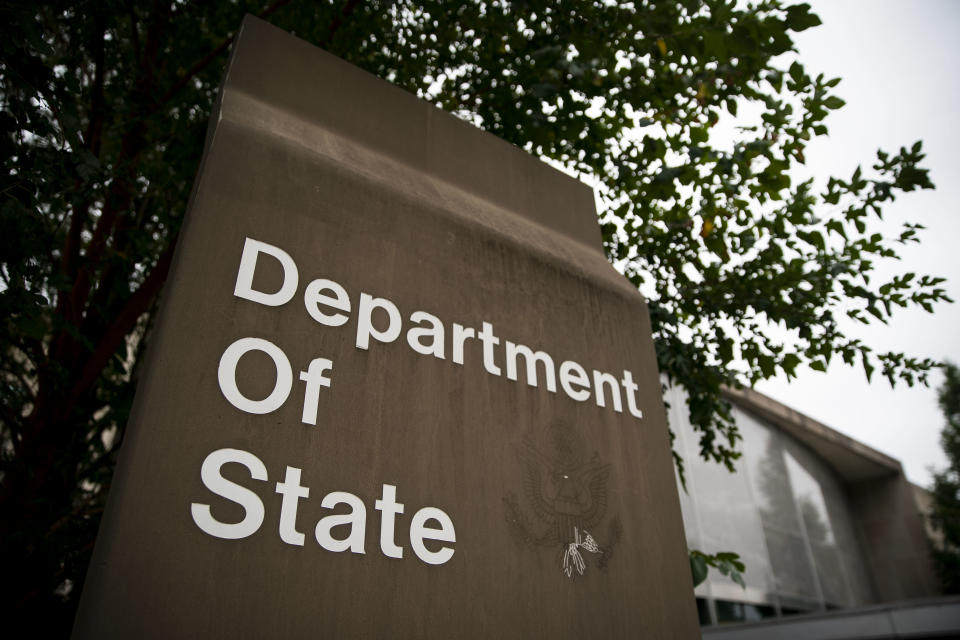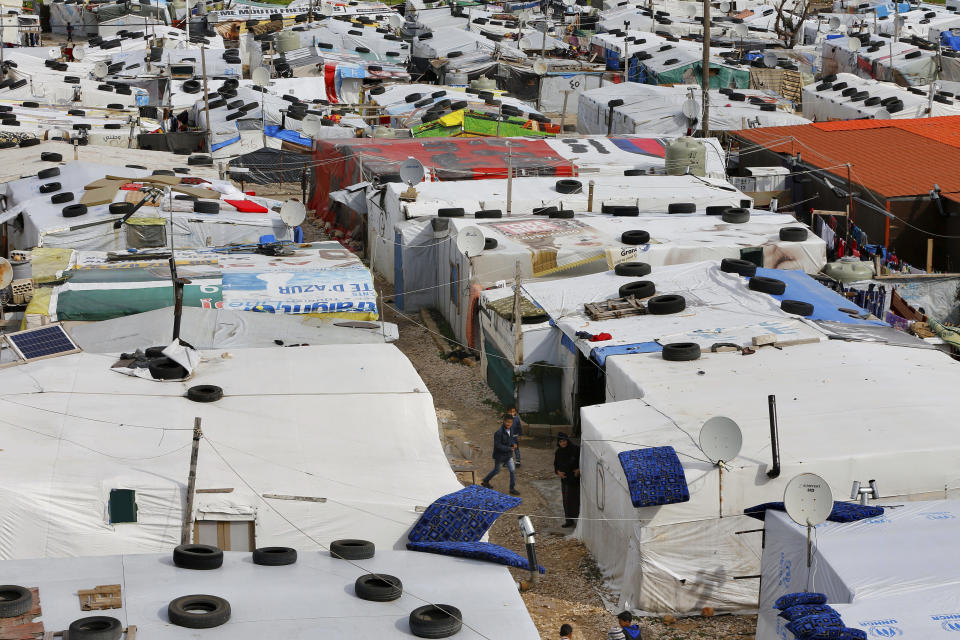As Trump clamps down on refugees, one group benefits: Religious exiles fleeing Ukraine

Since President Trump took office in January 2017, worldwide refugee admissions to the United States have plummeted, even as the number of people fleeing conflict, persecution or human rights violations around the globe last year was the highest on record since World War II.
As the White House continues to chip away at the U.S. refugee program — most recently proposing another historically low admissions ceiling of 18,000 for fiscal year 2020, along with an executive order to allow state and local governments to block refugees from resettling in their communities — displaced persons have seen diminishing opportunities to seek refuge in the U.S.
According to the United Nations High Commissioner for Refugees, two-thirds of all refugees in 2018 originated from five countries: Syria, Afghanistan, South Sudan, Myanmar and Somalia.
The only country from which the number of refugees admitted into the U.S. has increased significantly under the Trump administration isn’t even one of the UNHCR’s places “of concern”: Ukraine.
In fact, as of Sept. 20, Ukrainian refugees were the third-largest group to be resettled in the U.S. during fiscal year 2019, following the Democratic Republic of the Congo and Myanmar, according to an analysis of State Department data by the nonpartisan think tank Migration Policy Institute.
“Every year there are definitely changes in nationalities that come through based on what's happening with global refugee trends and U.S. foreign policy interests,” said Jenny Yang, vice president of policy and advocacy at World Relief, a Christian nongovernmental humanitarian organization whose services include refugee resettlement.
Those changes, Yang continued, are “usually a direct result of country conditions where refugees [are] coming from. So it begs the question: If we’re seeing large numbers of Burmese and Congolese, we know what’s happening there, but what’s happening in Ukraine that would increase numbers so dramatically?”
The answer appears to lie in policies dating back to the Cold War as well as Ukraine’s ongoing conflict with Russia. Yang and others who work to resettle refugees in the United States told Yahoo News that most of those arriving from Ukraine are coming under what’s known as the Lautenberg Amendment, enacted by Congress in 1990 to provide a clear path to refuge for Christians and Jews fleeing religious persecution in the former Soviet Union. (It was co-sponsored by Sens. Frank Lautenberg, D-N.J., and Arlen Specter, R-Pa.) In 2004, the Lautenberg Amendment was expanded to include religious minorities in Iran, including Christians, Zoroastrians, Baha’is and others.
Unlike regular refugees, who must be referred for resettlement in the U.S. by the UNHCR, another NGO or a U.S. embassy, members of religious minorities from the countries covered by the Lautenberg Amendment can apply directly for refugee status if they have close family in the United States — a provision that Trump in other contexts has denounced as “chain migration.” Lautenberg applicants are also required to prove only that they are members of a religious minority with a credible fear of potential persecution, a much lower standard than is required under U.S. law for other prospective refugees, who must establish that they’ve either suffered past persecution in their home country or have a “‘well-founded fear’ of persecution on account of race, religion, nationality, membership in a particular social group, or political opinion.”
Nearly three decades after the Lautenberg Amendment was established, its protections still extend to religious minorities in former Soviet countries, including Ukraine, which is predominantly Orthodox Christian. The recent wave of Ukrainian refugees has largely been made up of Pentecostal Christians, whose numbers have been growing, particularly in the war-ravaged eastern part of the country, an increase spread by missionaries underwritten, in part, by American evangelicals.
“I think the war is the main factor in why they are leaving, particularly men who don’t want to be drafted,” said Taras Kuzio, a professor of political science at the National University of Kyiv-Mohyla Academy and expert on Ukrainian politics. “The war kills soldiers every day.”
“I think their use of religious groups is a way to get into the U.S.,” Kuzio said of those applying for refugee status under the Lautenberg Amendment, noting that U.S.-based missionary groups have been pushing to establish a presence in Ukraine since the early 1990s and have been most successful in the eastern and southern parts of the country, which have been most affected by the current conflict. “I am skeptical how strongly committed they are to these religious groups.”

Oleg Pynda is a Pentecostal Christian who came to the U.S. as a refugee in the 1990s and now serves as the executive director of the Ukrainian Community Center of Washington state, a popular destination for new arrivals.
Pynda said that while the kind of state-led religious persecution that he experienced under the Communist Party no longer exists in Ukraine, Pentecostals and followers of other Protestant denominations face more discrimination by the Orthodox majority — “particularly for those who don’t want to participate in the war.” Many report difficulty finding work.
“They are conscientious objectors,” Pynda argued, echoing Kuzio’s conclusion that the conflict with Russia is driving the flow of refugees from Ukraine.
Advocates and experts on refugee resettlement are hesitant to diminish or discredit the experiences of any group of refugees. The rise in Ukrainian refugees alone is not a concern. But, they argue, the fact that Ukrainians made up such a sizable portion of all refugees admitted to the United States last year, while arrivals from all other parts of the world decreased dramatically, highlights bigger issues with the Trump administration’s approach to refugees overall, especially as it seeks to further restrict not just the number of arrivals but who, exactly, is welcome to resettle in the United States.
The maximum number of refugees the U.S. will resettle each year is determined by the president after required consultation with Congress. As part of the consultation process, the State Department, in conjunction with the Departments of Homeland Security and Health and Human Services, must provide Congress with a report detailing the current global refugee situation along with the administration’s proposal for admissions in the coming year.
Until this year, the report has traditionally included proposed ceilings for each region based on conditions and referrals.
Unlike the detailed 70-, 80- and even 40-page reports presented to Congress in the past three years, the Trump administration summed up its recent proposal for the historically low 18,000 refugee admissions in fiscal year 2020 in just 735 words. Despite leading with a description of the administration’s foreign policy as a “commitment to make decisions based on reality, not wishes, and to drive optimal outcomes based on concrete facts,” the report submitted to Congress late last month focused less on specific data related to the global refugee situation than on vague references to U.S. “generosity” and how hard our government has worked to “resolve conflicts in Syria and Afghanistan, strengthen economies and governance in Central American countries, and support the legitimate government in Venezuela against Maduro’s tyranny.”
This year’s report also does away with the traditional allocation of admissions by region. Rather, “as a means of serving U.S. foreign policy interests, this year’s refugee admissions proposal has specific allocations for people persecuted on account of their religious beliefs, Iraqis whose assistance to the United States has put them in danger, and legitimate refugees from [Central America’s] Northern Triangle countries.”
On a background call to discuss the proposal, senior administration officials told members of the press they were specifically proposing to designate up to 5,000 admissions for people who have suffered or fear religious persecution and for those specified in the Lautenberg Amendment, 4,000 for Iraqis endangered because of their work for the U.S. and up to 1,500 for nationals of Guatemala, Honduras and El Salvador deemed to meet the definition of “refugee.”

A State Department spokesperson did not respond directly to a question from Yahoo News about which countries or regions the administration expects to produce the most refugees fleeing religious persecution in FY 2020. Current data on refugee admissions does not track the specific causes of displacement (e.g., how many refugees were persecuted specifically because of their religious beliefs).
However, data is available on the religious affiliation of refugees admitted to the United States, and recent trends have prompted skepticism about which religious minorities the administration’s new proposal is designed to protect.
The overall reduction in refugee admissions over the last three years has affected refugees of all religions, but Muslims have been hit particularly hard. As of Sept. 20, the number of Muslim refugees admitted to the United States since 2016 had dropped 87 percent. Christian refugees, whose numbers fell by 37 percent during this same period, now make up an overwhelming majority (79 percent in FY 2019) of refugees arriving in the U.S.
Many attribute this shift to the administration’s temporary suspension on admissions, followed by implementation of enhanced vetting measures for prospective refugees from 11 “high risk” countries, most of which are majority Muslim.
“It’s never been clear what that enhanced screening involved, but it has had the effect of leading to an enormous drop in admissions from these countries,” said Mark Greenberg, senior fellow at the Migration Policy Institute and co-author of the MPI’s recent report on refugee admission trends under the Trump administration.
The MPI’s analysis found that admissions from the 11 “high risk” nations have fallen by 95 percent over the last three years, with significant reductions in refugees accepted from three of those countries — Syria, Iraq and Somalia — accounting for most of the overall drop in worldwide refugee admissions to the U.S. since 2016.
Increased vetting for those 11 countries “wasn’t labeled as a Muslim ban, but has had very close to that effect in the refugee program,” said Greenberg, echoing a view shared by other advocates and officials with refugee resettlement organizations.
In a statement to Yahoo News, a State Department spokesperson said: “There is no ban in the U.S. Refugee Admissions Program on any nationality or religion. Security vetting takes time, but it is critical. The American people must have complete confidence that everyone granted resettlement in our country is thoroughly vetted.”

The spokesperson also reiterated the administration’s decision to prioritize persecuted religious minorities, stating, “The United States is committed to advancing religious freedom internationally, including the protection of religious groups, across the globe.”
Iran, however, appears to offer an example of the negative impact such enhanced vetting measures have had on religious minorities from those “high risk” countries.
Since Iran was added to the Lautenberg Amendment in 2004, approximately 30,000 members of religious minorities from that country have resettled in the United States under the Lautenberg provisions. Because there is no U.S. embassy in Iran, members of religious minorities there who seek to resettle in the U.S. under the Lautenberg program must be screened and authorized for travel to Vienna, where they are interviewed by U.S. authorities. Previously, the process took a few months, and nearly 100 percent of those approved for travel to Austria were ultimately resettled in the United States.
However, what was once a relatively smooth pathway to refuge for persecuted Iranians has effectively been blocked since Trump took office. Vienna stopped admitting new applicants in January 2017, stranding about 100 Iranians who’d already been approved for travel to Austria for over a year before denying most of their applications without explanation.
“We believe it is the vetting change in the refugee program that has dramatically affected Iranian refugees,” said Mariko Hirose, litigation director at the International Refugee Assistance Project, which is engaged in multiple lawsuits against the Trump administration over the Iranian denials.
“Lautenberg was created to facilitate admissions from populations protected under that statute. That was Congress saying these populations deserve our protection,” Hirose said. “Certainly we’ve found that is not true for our clients who are persecuted religious minorities from Iran.”
“This administration purports to care significantly about religious minorities from [the Middle East], but there’s a real disconnect between how they speak about religious minorities in that part of the world and what we’re actually seeing with concrete action,” said Naomi Steinberg, vice president of policy and advocacy at HIAS (formerly the Hebrew Immigrant Aid Society).
HIAS has been a major supporter of the Lautenberg Amendment, which it credits with allowing the organization to resettle tens of thousands of persecuted Jews from the former Soviet Union and, in more recent years, other religious minorities from Iran.
The Lautenberg program is “a very concrete way to show the rest of the world that we are standing in solidarity with religious minorities from Iran, and we haven’t seen that in the last three years,” she said.
Ultimately, refugee rights advocates worry about how the Trump administration’s increasingly drastic restrictions on refugee admissions will affect the U.S. refugee program, and those desperately seeking safety around the globe, both in the coming fiscal year and in the long term.
“Resettlement is often reserved for those who are most vulnerable, in places where they are not safe or secure,” said Bob Carey, who served as director of the Office of Refugee Resettlement under President Barack Obama. “We're turning our back on vulnerable people in a way that hasn’t happened in the modern refugee program.”
Download the Yahoo News app to customize your experience.
Read more from Yahoo News:
Greta Thunberg: Powerful men 'want to silence' young climate activists
'I've never had a crystal': Marianne Williamson demands to be taken seriously
Before a notorious phone call, the Trump administration was lauded for helping Ukraine
PHOTOS: New book unveils unique insights from behind the lens of conflict photography



